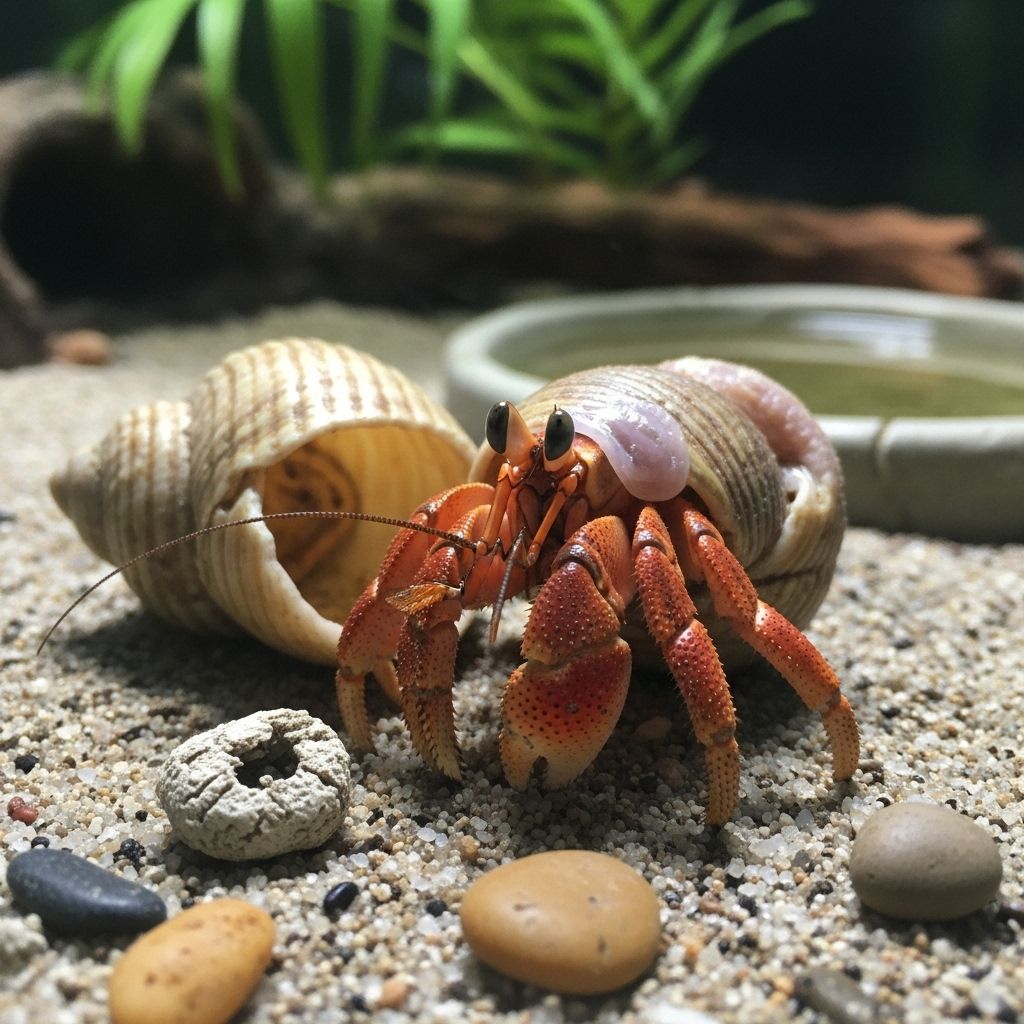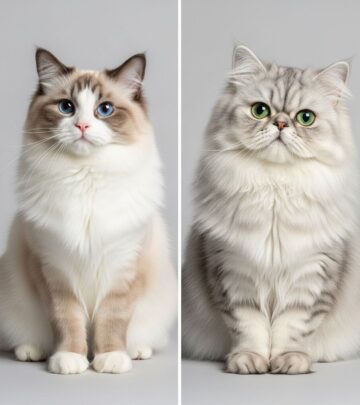Hermit Crab Molting: Signs, Stages, and Care Essentials
Understanding the molting process is critical for every hermit crab owner to support their pet’s health and wellbeing.

Molting is a fundamental, yet complex and stressful event in the life of every hermit crab. Understanding how to recognize molting behaviors and support your pet through this vulnerable time is essential for their well-being and longevity. This comprehensive guide explores the signs to watch for, the stages of molting, and best practices every owner should know.
What Is Hermit Crab Molting?
Molting is the biological process in which a hermit crab sheds its old exoskeleton to grow a new, larger one. Unlike mammals, which grow continuously, hermit crabs must periodically discard their hardened shell covering (exoskeleton) to allow for healthy development. This process is vital to their survival, but also brings a period of intense vulnerability and risk.
Why Do Hermit Crabs Molt?
- To grow: Hermit crabs cannot get bigger without removing their restrictive exoskeleton.
- To regenerate lost limbs: Molting allows for regrowth of missing parts such as legs, pincers, or antennae.
Recognizing Molting: Key Signs and Behavior
Molting hermit crabs often display distinctive changes in appearance and behavior that set them apart from healthy, actively social crabs or sick individuals. Early recognition helps you avoid accidental harm and provide crucial care during their molt.
Pre-Molt Signs
- Increased eating and drinking: Hermit crabs often gorge themselves on food and water before a molt, building up vital nutrient reserves and filling their molt sac with extra nutrients and moisture.
- Excessive digging: Many crabs start digging more often and deeper into substrate to prepare a safe burrowing site where they will molt in seclusion.
- Changing shells: Sporadic shell switching may occur as the crab seeks one that feels safest or most comfortable for the upcoming molt.
- Sluggishness or inactivity: Instead of their normal activity, pre-molt crabs become lethargic, with noticeably reduced movement.
- Cloudy or glazed eyes: Healthy hermit crab eyes appear glossy and clear; pre-molt crabs may show a cloudy or dulled appearance.
Freshly Molted Signs
- Hairy legs: Limbs appear unusually fuzzy or hairy due to the new exoskeleton’s texture.
- Sharp, black nail tips: Claw and leg tips are noticeably sharper and darker after a successful molt.
- Change in color: Crabs may look lighter or even darker than before molting, depending on individual variation.
The Stages of Hermit Crab Molting
The molting cycle in hermit crabs can be divided into distinct biological stages. Understanding these helps owners anticipate needs and changes in their pets’ behavior.
| Stage | Description | Key Features |
|---|---|---|
| Pre-molt (Proecdysis) | Nutrient and water accumulation, lethargy, seeking safety for the molt. | Voracious eating, digging, cloudy eyes, increased solitude. |
| Molting (Ecdysis) | Shedding exoskeleton; crab emerges with a soft, pale new covering. | Hidden underground, emergence of old exoskeleton parts if visible. |
| Post-molt (Postecdysis) | New exoskeleton hardens, crab eats the old exoskeleton for minerals. | Soft, fragile appearance, reclusive, often still buried. |
| Intermolt | Resting and growing phase between molts; crab is active and healthy. | Normal color, full muscle tone, social activity resumes. |
Why Molting Is Stressful—and Dangerous
Molting is the most perilous time in a hermit crab’s life. During molting, the crab’s new exoskeleton is fragile and soft, leaving it at risk for:
- Predation by other crabs (especially if housed in groups)
- Infection or desiccation (because of exposed soft tissue)
- Failed molts, which are often fatal if the crab cannot fully shed its old covering
- Dehydration or nutrient deficit (if not properly cared for before or during the molt)
Because of these risks, hermit crabs have evolved to bury themselves, sometimes with their shell, during molts. The dark, insulated underground chamber preserves moisture and temperature, lowers stress, and offers the privacy necessary for a successful molt.
Molting Frequency and Duration: What to Expect
The frequency and duration of hermit crab molts depend largely on the size and age of the animal, as well as environmental conditions.
- Smaller crabs: Molt more often (every few months), but the process is quicker (a few weeks).
- Larger crabs: Molt less frequently (potentially once a year), but may be buried for several months.
- No fixed schedule: Each crab is unique; time underground can range from weeks to over six months.
Supporting a Safe Molt: Best Practices for Owners
Proper husbandry is crucial during this time. To ensure your hermit crab survives and thrives through the molting process, follow these care guidelines:
- Deep, moist substrate: Provide enough substrate (preferably sand or a mix with coconut fiber) at least three times the height of your largest crab, moistened to the consistency of a squeezed-out sponge.
- Do not disturb: Avoid digging up or handling buried crabs; accidental disturbance can cause them to abort the molt.
- Tank separation: If possible, isolate the molting crab or protect it from tank mates who may attack its vulnerable form.
- Monitor humidity and temperature: Keep humidity between 70–80% and temperatures between 75–80°F (24–27°C) to mimic natural conditions.
- Calcium availability: Offer calcium-rich food sources (cuttlebone, eggshell, minerals) for strong exoskeleton formation.
- Observe but don’t interfere: During and after molting, let the crab consume its old exoskeleton undisturbed. This provides vital nutrients for the new covering.
Common Questions About Hermit Crab Molting
How can I tell if my hermit crab is molting or dead?
Molting and death can appear similar to the untrained eye. A molting crab will usually be buried, motionless, and sometimes partially exposed with pieces of exoskeleton visible. The odor of decay is a clear sign of death, whereas a molting crab should not smell bad. Checking for subtle movement (if visible) or waiting to observe changes is safest, but avoid disturbing buried crabs.
Should I move a molting hermit crab?
No. Moving a hermit crab during molt can cause fatal stress or injury. Leave them where they have buried themselves, and do not attempt to dig them up.
My hermit crab is missing a leg. Will it grow back after molting?
Yes, hermit crabs can regenerate missing limbs through the molting process. The regrown limb may first appear as a gel limb, small and pale, but will restore fully in subsequent molts.
How long does the molting process take?
Duration varies by crab size and age. Small crabs may complete their molt in 2–4 weeks, while larger crabs can take several months from pre-molt to post-molt surfacing. Patience is essential.
What if other hermit crabs disturb the molting crab?
If you notice other crabs bothering a molting hermit crab on the surface, separate them immediately to prevent attack or cannibalism. Burying themselves typically protects molting crabs, but watch for aggression if visual access is possible.
Post-Molt Recovery: What to Expect
Once your hermit crab surfaces after a molt, it will continue to harden its new exoskeleton and consume high amounts of calcium. Expect initial vulnerability and reduced activity as it regains strength. Freshly molted crabs may display:
- Unusual coloration: Lighter or more vibrant hues than usual
- Hesitant movement: Gentle exploration as their muscles regain control
- Increased feeding: Craving for both animal protein and mineral sources
Continue to monitor tank conditions and provide plenty of hiding spaces during this time. Return tank mates gradually, and continue offering a calcium-rich diet to promote a healthy, robust exoskeleton.
Frequently Asked Questions (FAQs) About Hermit Crab Molting
Q: Why does my hermit crab eat its shed exoskeleton?
A: Hermit crabs instinctively eat their shed exoskeleton to reclaim calcium and minerals essential for hardening the new exoskeleton.
Q: When can I return other hermit crabs to the main tank after one has molted?
A: Wait until the molted crab is active, fully mobile, and its exoskeleton has visibly hardened before reintroducing tank mates.
Q: Is it normal for my crab to change shells before or after molting?
A: Yes, shell changes can happen before or after a molt as your crab adjusts to its new size and seeks additional protection.
Q: How can I encourage a safe molt for my crabs in captivity?
A: Provide ample deep, moist substrate, maintain proper humidity/temperature, and minimize disturbance. Offer regular access to calcium and protein sources.
Summary Table: Molting Stages and Key Owner Actions
| Molting Stage | Owner’s Role |
|---|---|
| Pre-Molt | Watch for signs, provide deep moist substrate, avoid stress |
| Molting (Ecdysis) | Do not disturb, monitor tankmates, keep humidity high |
| Post-Molt | Ensure calcium/protein availability, maintain calm environment, observe health |
| Intermolt | Normal care, regular feeding, prep for next molt |
By understanding and respecting the molting process, you can help your hermit crabs thrive through every growth cycle—ensuring a healthy, happy, and long-lived companion.
Read full bio of medha deb












